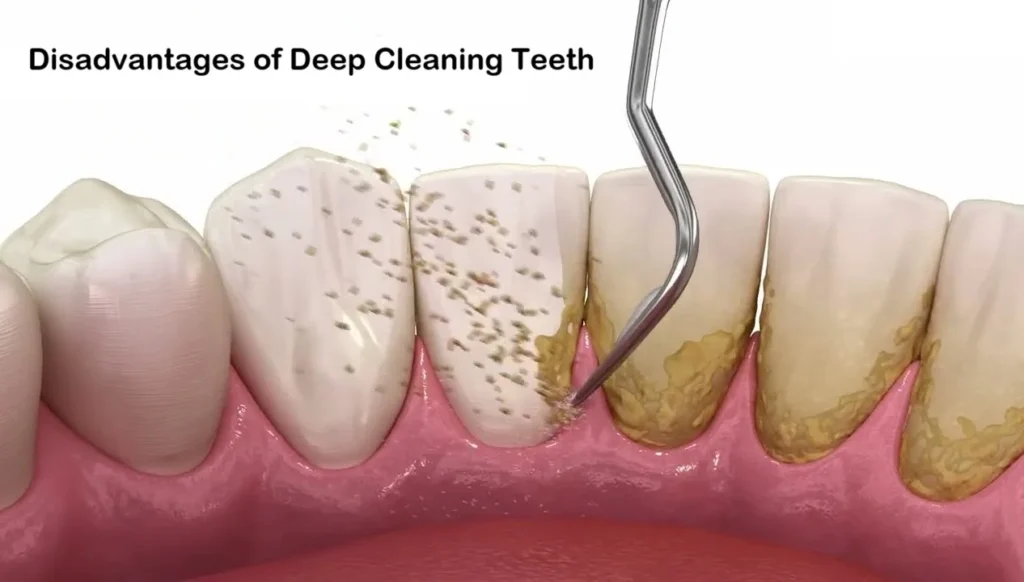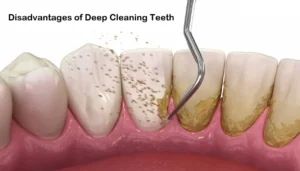The Hidden Disadvantages of Deep Cleaning Teeth

In dental health, deep cleaning teeth—scaling and root planing—is often recommended to treat gum disease. While it’s praised for preventing tooth loss and reducing infection, the procedure isn’t perfect. For many, the idea of “deep cleaning” sounds like a routine fix, but there are real drawbacks that aren’t discussed enough. At Trends24, we believe in balanced information. Let’s break down the disadvantages of this standard dental treatment in simple terms.
1. Discomfort During and After the Procedure
Deep cleaning is not an easy task. Unlike regular cleanings, which focus on the tooth surface, scaling, and root planing involve scraping tartar below the gum line. Even with local anaesthesia, some patients report sensitivity, mild pain, or a “scraping” sensation during the process. Afterwards, gums may stay tender for days, especially if the cleaning is aggressive. For those with low pain tolerance, this can feel more like a chore than a solution.
2. The Cost Adds Up Quickly
Deep cleaning is a costly procedure. Without insurance, a single session can cost 150 to 350 per quadrant (most people need at least two quadrants treated). Even with insurance, coverage varies. Some plans only pay a fraction, leaving patients with hefty out-of-pocket bills. Compared to a standard cleaning (75−75−200 total), this isn’t a minor expense—it’s a financial commitment many aren’t prepared for.
3. It’s Time-Consuming
Deep cleaning isn’t a quick fix. A standard cleaning takes 30–60 minutes, but scaling and root planing often require multiple visits, each lasting up to two hours. Finding time for repeated appointments can be stressful if you’re juggling work, family, or other responsibilities. For some, this leads to procrastination, defeating the purpose of urgent gum care.
4. Risk of Infection (Yes, Really)
Ironically, a procedure meant to treat the infection can sometimes cause it. If dental tools aren’t properly sterilized or aftercare instructions aren’t followed, bacteria can enter the gums. In rare cases, this might lead to swelling, abscesses, or even systemic infections. Choosing a reputable dentist reduces this risk, but no clinic is 100% immune to human error.
5. Gum Recession: A Silent Side Effect
Aggressive deep cleaning can damage delicate gum tissue, leading to recession. When gums pull back, more of the tooth root becomes exposed. Not only does this look uneven, but it also increases sensitivity to hot, cold, or sweet foods. In severe cases, the recession may require fixing grafts or cosmetic procedures—adding more cost and recovery time.
6. Temporary Tooth Looseness
This one surprises people: your teeth might feel wobbly after deep cleaning. Tartar buildup sometimes acts like a “glue” around loose teeth. Removing it can leave teeth temporarily unstable until the gums heal and reattach. While this usually resolves in a few weeks, the sensation can be alarming, especially if your dentist doesn’t warn you upfront.
7. Not Always Necessary
Not every patient with gum disease needs scaling and root planing. Some studies suggest mild to moderate cases might improve with less invasive treatments, like antibiotic gels or improved oral hygiene. However, clinics may recommend deep cleaning as a default—partly because it’s more profitable. Always ask for a second opinion if the recommendation feels rushed.
8. Recovery Time Can Disrupt Daily Life
You should hit pause on your routine after deep cleaning. Dentists often advise avoiding hard foods, alcohol, or strenuous exercise for 24–48 hours. For those with active lifestyles or demanding jobs, this downtime isn’t just annoying—it’s a genuine inconvenience. Plus, bleeding or swollen gums can make social interactions awkward.
9. Alternatives Are Often Overlooked
Before jumping to deep cleaning, ask: are there other options? Laser therapy or localised antibiotics can sometimes address gum disease with less discomfort and cost. Yet many patients aren’t informed about these alternatives. Being your advocate is key.
The Bottom Line: Is Deep Cleaning Worth It?
Deep cleaning teeth isn’t inherently bad—it saves smiles when gum disease is severe. But like any medical procedure, it has trade-offs. The discomfort, cost, and risks mean it shouldn’t be your first (or only) option without careful consideration.
Before you agree to scaling and root planing:
- Ask your dentist to explain why it’s necessary.
- Request a breakdown of costs and insurance coverage.
- Discuss alternatives, even if they’re not offered upfront.
At Trends24, we’re all about empowering you with honest, human-centred advice. Your health decisions should be informed—not just by what’s standard, but by what’s truly right for you.
Stay curious. Stay informed. Stay ahead with Trends24.




